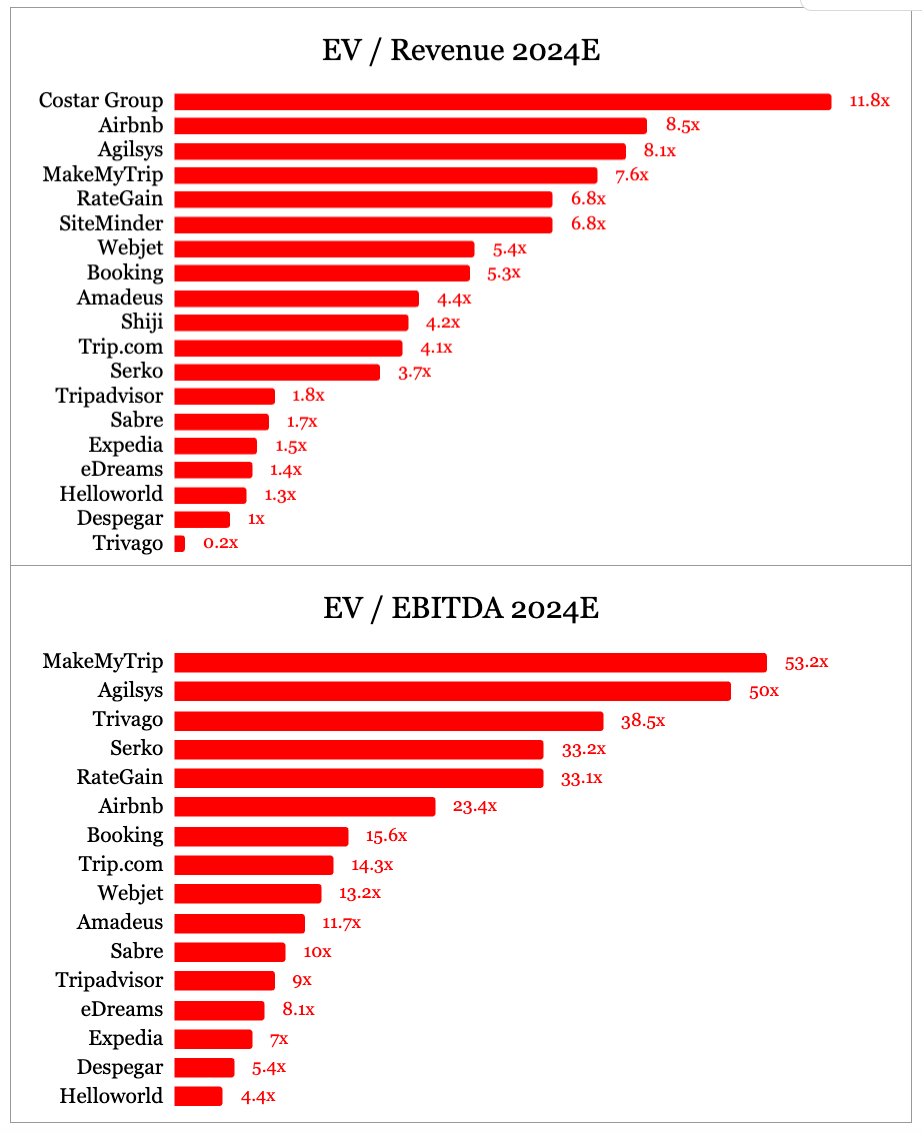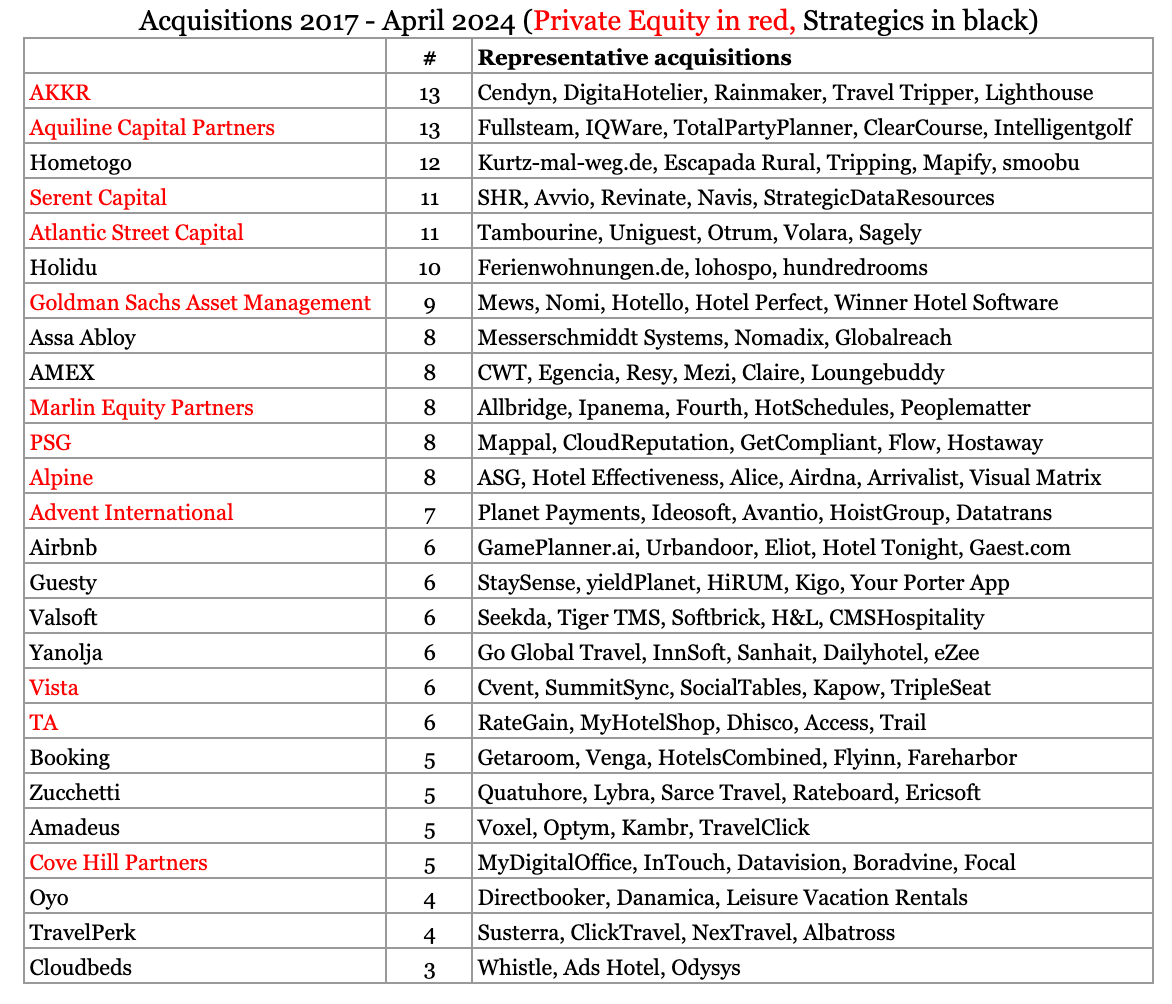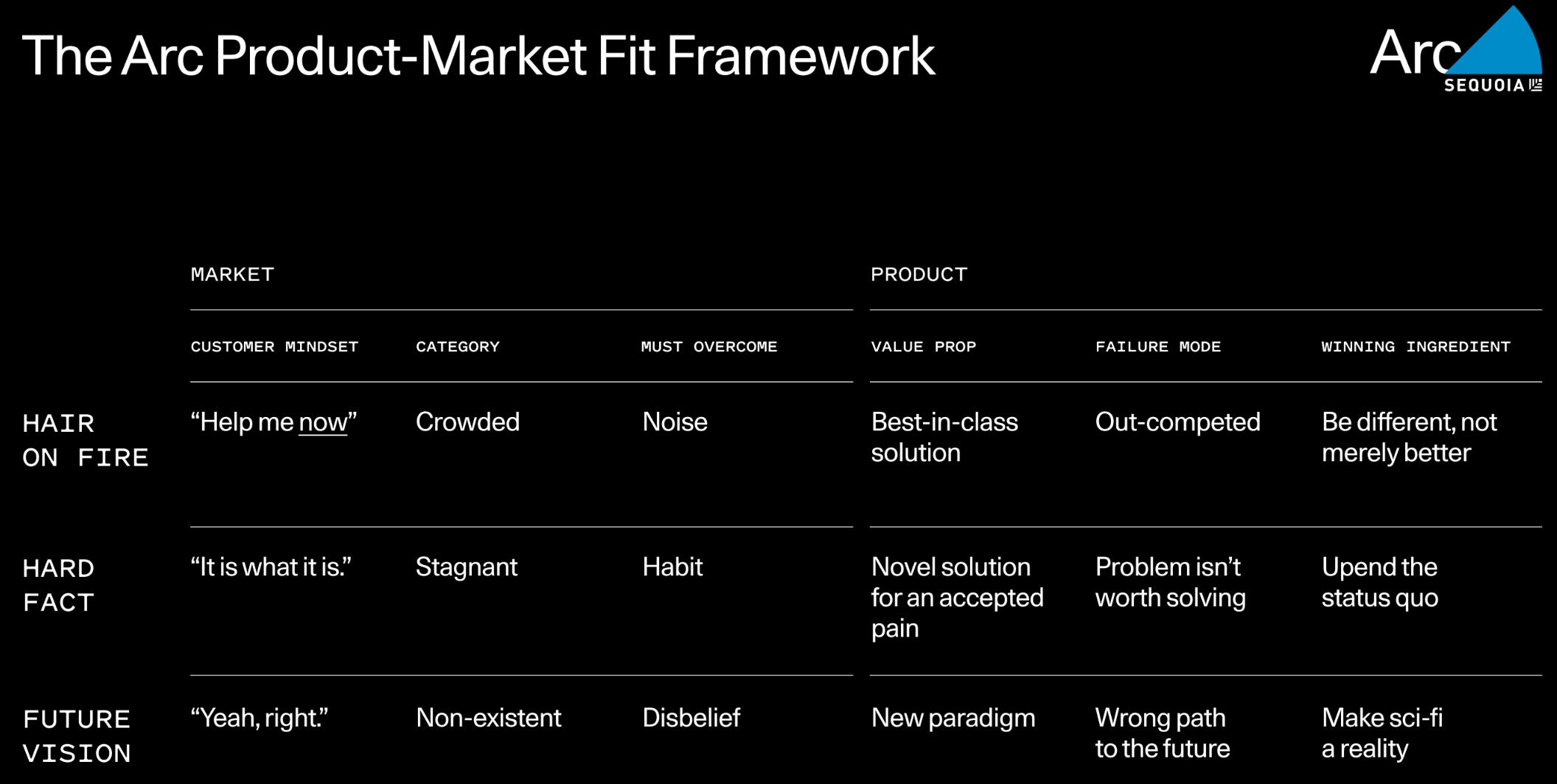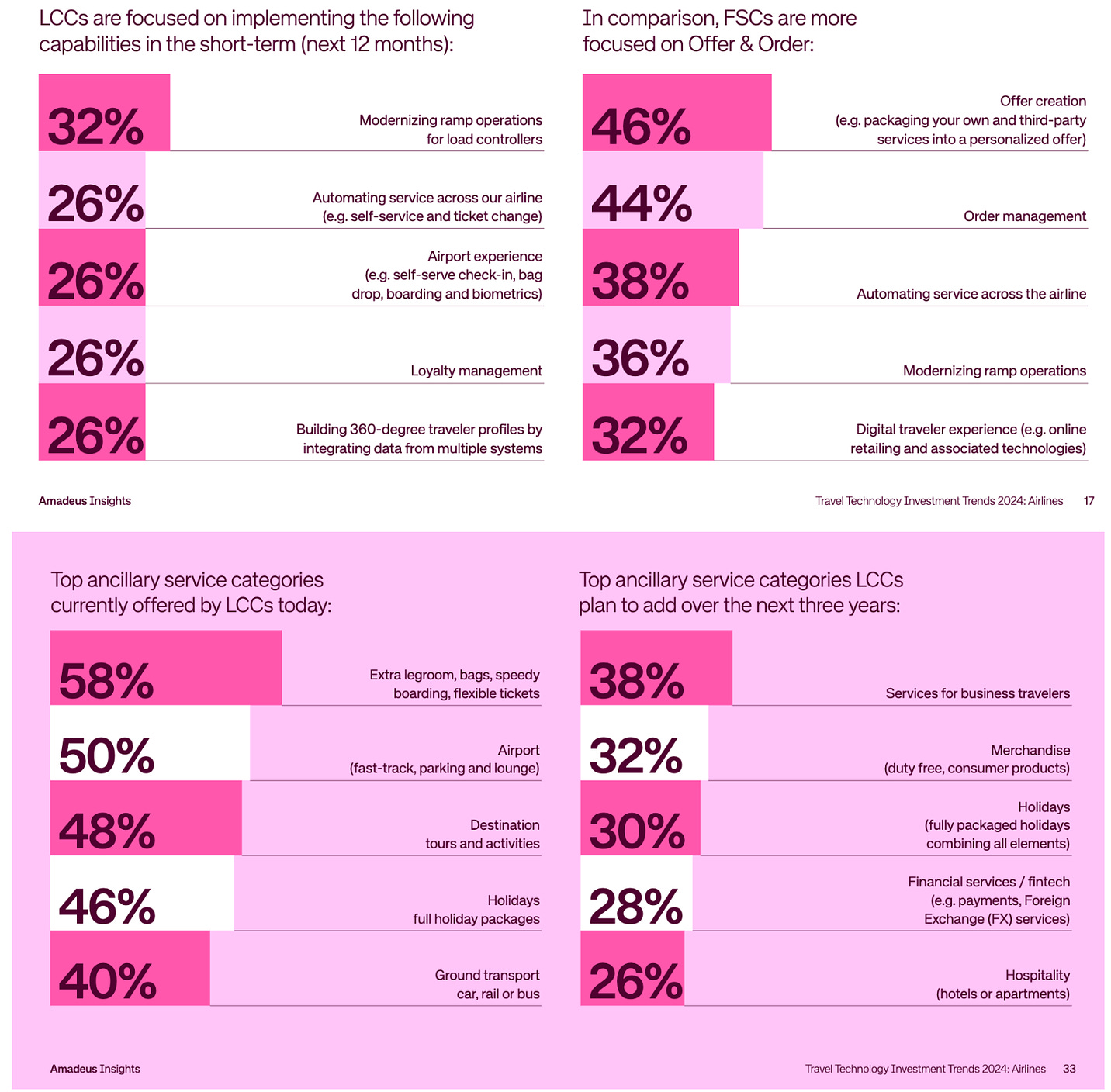In this edition, you’ll find frameworks for evaluating ideas (good, bad and new) and for accelerating Product Market Fit for B2B founders. You'll also find insights into travel tech valuation trends, M&A activities, and the outlook on airline tech investments. It’s a packed issue, but I hope you’ll discover at least one valuable nugget. As always, thank you for your attention. Oh, and don’t forget to vote in today’s poll after reading #10. I’m interested in the results :-). Thanks to HotelsByDay for sponsoring this newsletter
0. The most clicked link in the previous newsletterThe most clicked link in Travel Tech Essentialist #141 was Deloitte’s Facing Travel’s Future report. 1. A new framework to help B2B founders find Product Market FitProduct Market Fit (PMF) is often seen more as an art than a science, but by leveraging data from over 500 investments, First Round Capital has reverse-engineered a PMF method tailored for sales-led B2B companies. They are launching an intensive 14-week program for exceptional pre-seed B2B founders. It’s free, highly curated, no-strings-attached, and starts May 29 with a limited number of spots*.
The program consists of eight tactical sessions, with the full content of the first session available as a preview. Here is my summary of their first session, which focuses on the four levels of PMT, metrics for each level (ARR, churn, sales conversion, magic number, burn multiple, etc…), and levers for moving up. *Interested founders can apply here 2. Valuation multiples across Travel Tech categories and companiesIn the last newsletter, I showed a graph with Enterprise Value multiples as of December 2023. A few of you asked for more recent figures. Below, you can see the EV multiples as of April 12, 2024. Here is a comparison of Enterprise Value to Revenue and Enterprise Value to EBITDA for 20 travel technology companies based on GPT Partners data: 3. Travel Tech M&AAKKR leads in the number of Private Equity acquisitions with 13 Travel & Hospitality Tech acquisitions over the last six years. Strategic buyers have significantly contributed to M&A activity, especially post-Covid. 4. Understanding Product-Market Fit through problem archetypesSequoia presents another framework for understanding PMF. Rather than diagnosing whether you have PMF, Sequoia outlines three archetypes that help founders understand how the market interacts with the problem your product solves:
5. How do the Michelin Keys ratings compare with guest reviews?Michelin, known for its restaurant star ratings (and tires), has expanded into the hospitality industry by launching the Michelin Key rating for hotels. This new rating system could impact hotel demand dynamics and pricing strategies. This analysis from Shiji Group compares Michelin Keys with the Guest Review Index (GRI), a proprietary algorithm developed by Barcelona-based ReviewPro, which Shiji Group later acquired. GRI aggregates guest feedback across various platforms to measure guest satisfaction. Key insights include:
The post concludes that combining Michelin's professional analysis and assessments with real guest feedback will provide a more thorough view of hotel quality. 6. A framework to assess new ideasIn a conversation with Lenny Rachitsky, Dharmesh Shah, co-founder of Hubspot, shared the 4P decision-making framework he uses when assessing new ideas:
Your life stage and financial situation also dictate the risks you can afford. A 1% chance of achieving a $100 billion outcome is easier to take on if you can afford to fail. But if you are starting and the priority is putting food on the table, the 1% probability of succeeding is probably not a gamble you can make. In that case, Probability ranks highest among the Ps. In Dharmesh Shah’s case, Potential outcome and Passion/Proximity are his main considerations: “What has great potential that I'm passionate about? Even if I fail, I'll have no regrets because I cared enough about it." 7. Generative AI vacation planningMorgan Stanley published an article on how Generative AI will bring disruption and opportunity to OTAs and search engines. Here are some of their takeaways:
8. Airline Technology investment trendsThis recent Amadeus report examines how airlines are using new technologies to transform into traveler-centric retailers and outlines their future priorities (and budgets) for improving traveler experiences. It addresses key questions such as:
The report is divided into seven sections:
9. Y Combinator’s Request for StartupsHere are 20 startup ideas and categories that Y Combinator would like to see more founders explore. Among them:
10. Avoid tempting startup ‘tarpit’ ideasThis is the counterpart of the previous entry. Y Combinator, with its thousands of startups and alumni, is exceptionally well-equipped to predict which early-stage startup ideas are likely to succeed or fail. In this video (if you prefer text, here are the notes), Dalton Caldwell and Michael Seibel, Managing Directors and Group Partners at YC, discuss what they term "tarpit ideas"—seemingly easy and promising startup ideas that have consistently led many founders to failure. The term “tarpit” comes from the petroleum tar pits where paleontologists find fossils. Animals would confuse the shiny tar for fresh water and try to take a drink… only to fall in, get stuck, and die. The smell of their body would attract other animals, who’d fall into the same trap. An example they discussed is apps for discovering new things like restaurants, events, activities, concerts, etc… The pitch is: “Discovery is broken; I don't know about so many ___. Despite Google and other platforms, I prefer recommendations from friends or insiders. Lots of people tell me they have this problem too.” However, although people express a desire for unique things, their actions favor the most popular options. An esoteric, hole-in-the-wall, unique restaurant is an esoteric, hole-in-the-wall, unique restaurant for a reason. What could be examples of tarpit ideas in travel? Here are some candidates, but I welcome any disagreements and new additions to the list. Please send them over (and vote on the related poll below 🗳️)
PS. Community PollThe poll in the previous newsletter asked about the most crucial job for a future personal travel robot. 'Tour Guide' was the clear winner, with 35% of the votes, followed by 'Translator' with 26%. Full results here. Today’s poll will pick up on the “tarpit ideas” (see story #10 in this newsletter)
Are you fundraising?If you are a startup looking to raise a round (from pre-seed to Series D), I can help (for free). Travel Investor Network is a private platform where I recommend innovative travel startups to investors and innovators. If you’re interested, please start by completing this form. Travel Tech Essentialist Job BoardExplore the 1376 open positions on Travel Tech Essentialist’s curated Job Board and stay ahead of the curve by subscribing to job alerts. Some of the jobs on the board:
→ Join the Talent Network. Hiring companies sometimes ask me to help them find the best talent. If you want me to have you on my radar to introduce you to the right opportunities, join the new Talent Network (it takes 3 minutes). → If you're contemplating a career move, simply curious, or an HR professional seeking job insights, subscribe to my Travel Tech Jobs newsletter. If you like Travel Tech Essentialist, please consider sharing it with your friends or colleagues. If you’re not yet subscribed, you can do so here: And, as always, thanks for trusting me with your inbox. Mauricio Prieto |
lunes, 22 de abril de 2024
Travel Tech Essentialist #142: Ideas
Suscribirse a:
Enviar comentarios (Atom)







No hay comentarios:
Publicar un comentario